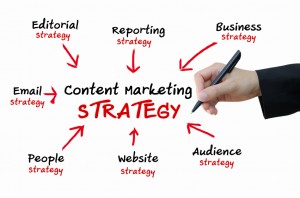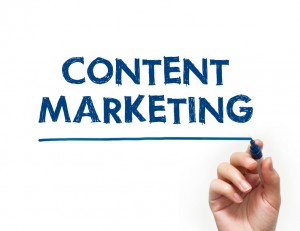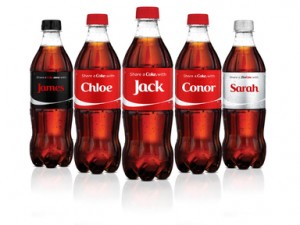 What is big data and how does it fit in with marketing personalisation?
What is big data and how does it fit in with marketing personalisation?
No doubt you’ve seen articles about “big data” and maybe even had your inbox inundated with “big data” news.
Last year I wrote about content and cross media personalisation and how print and the various social media platforms interact with each other creating a touch point for customers to engage.
What does it mean?
Big data is nothing new, in fact it has been around for a long time. It has just got bigger.
Let me explain.
When I browse I know that I am being tracked or followed around the web, unique customised adverts designed to entice me to buy based on my browsing history are evidence of this.
Having crossed over to the dark side by joining google business, well meaning colleagues have commented ‘doesn’t it feel a little like big brother is watching over you.’
But wait a minute…
Amazon is a great example of giving its customers a personalised viewing experience based on your shopping history.
When you click through and place an order with amazon you get further recommendations in your inbox or on your amazon homepage for other items you might be interested in viewing; ‘personalisation’ and ‘customisation’ is key to amazon’s buying experience.
Recently I had the pleasure of writing up a great review for a restaurant we ate in Paris on Trip Advisor and whilst I was browsing on a completely unrelated website an advert popped up with a list of recommended places to eat in Paris uniquely personalised for me.
I have to admit; it left me feeling a little shall we say uncomfortable under the collar.
How do these unrelated websites track my buying habits or know what I’m likely to be interested in purchasing or where I like to eat?
When on holiday in europe, adverts pop up whilst I’m browsing hi-lighting things I could be doing relevant to the very country I’m in.
It’s all about ‘big data’.
I like wikipedia’s definition of big data, ’a term used for a collection of data sets so large and complex that it becomes difficult to process using database management tools’
Retailers and big brands are leading the way in using big data analysing our unique buying trends. The analytics of customer data has got bigger due to interaction and engagement the consumer has on social media platforms.
Big data isn’t new. Retailer loyalty cards, medical records, tax returns all this kind of data has and is managed using a relationship customer database.
The challenge for marketers’ and managers of big data is how to manage the massive surge in data.
New skills are needed to understand what to do with this data and let’s not forget that the job of a big data analytics person didn’t exist five years ago.
We live in an online and digital world where data has got bigger – from the number of tweets to text messages, facebook updates, online shopping and the gadgets we use to interact online.
Smartphones send and receive large volumes of data; the heating thermostat that can be set using a smartphone so your house is warm when you return home from work or the washing machine that can be remotely set to come on at a specific time.
All of these processes involve sending or receiving large chunks of data, which is being used to monitor our buying quirks and hi-light when we are more likely to be online and reciprocal to marketing messages.
Hang on a minute any data is good data isn’t it? 
Wrong.
Having a load of data is all well and good but if you don’t know how to analyse or interpret it then it’s useless and of course what do you hope to achieve once you have all this data? Companies are only just realising that data is a valuable asset that can be exploited for targeted marketing.
Using the data you have and understanding what it is telling you is key to personalising your marketing message to your audience and these will be some of the questions that marketers need to ask before they deliver mass marketing messages to their audience.
Using data to ‘personalise’ a buyers experience and understanding your audiences’ persona is key to delivering an effective message.
Sending or emailing a marketing message for a two seater BMW Z4 to a family of four who drive a saloon car has missed it’s target audience.
They may well be car junkies and watch Top Gear every sunday but they are unlikely to walk into a garage and buy the car.
Consumers know that when they use their loyalty cards or purchase online and register their details on a site the information is then used to create personalised content to make the buying experience unique and highly personalised next time.
Most banks have vast amounts of data gleaned from our saving and spending habits and companies who send invoices or statements electronically use the data to create targeted personalised marketing messages so the customer will hopefully make more purchases.
 Emailing a personalised marketing message is not quite so intrusive as being lam-blasted with pop up messages as my example above, or, being subjected to a mass of unsolicited, unpersonalised email from a company that you vaguely recollect in your distant memory because you made a purchase and now they think they can seduce you into buying that oh so much needed lawnmower when their data should be telling them you live in a flat and hate gardening.
Emailing a personalised marketing message is not quite so intrusive as being lam-blasted with pop up messages as my example above, or, being subjected to a mass of unsolicited, unpersonalised email from a company that you vaguely recollect in your distant memory because you made a purchase and now they think they can seduce you into buying that oh so much needed lawnmower when their data should be telling them you live in a flat and hate gardening.
How would you respond if you:-
- Fill up in the same garage weekly and you get a promotional message via text or direct mail telling you that during the month of April the garage is offering 5p off every gallon of fuel because they recognise you as a regular customer and want to say thank you.
- You purchased 6 toner cartridges last month and because the company you bought them from value your regular custom send you 10 boxes of laser compatible stationery to say thank you.
- You spend a lot of time travelling from the UK to Europe staying in a well known business hotel chain and you get a text message welcoming you to your hotel on your next trip with a free evening meal and a glass of wine to say thank you for your valued custom.
That is what I mean about being targeted, specific and knowing your audience.
Now what was I saying about big brother watching…

 What is big data and how does it fit in with marketing personalisation?
What is big data and how does it fit in with marketing personalisation?




